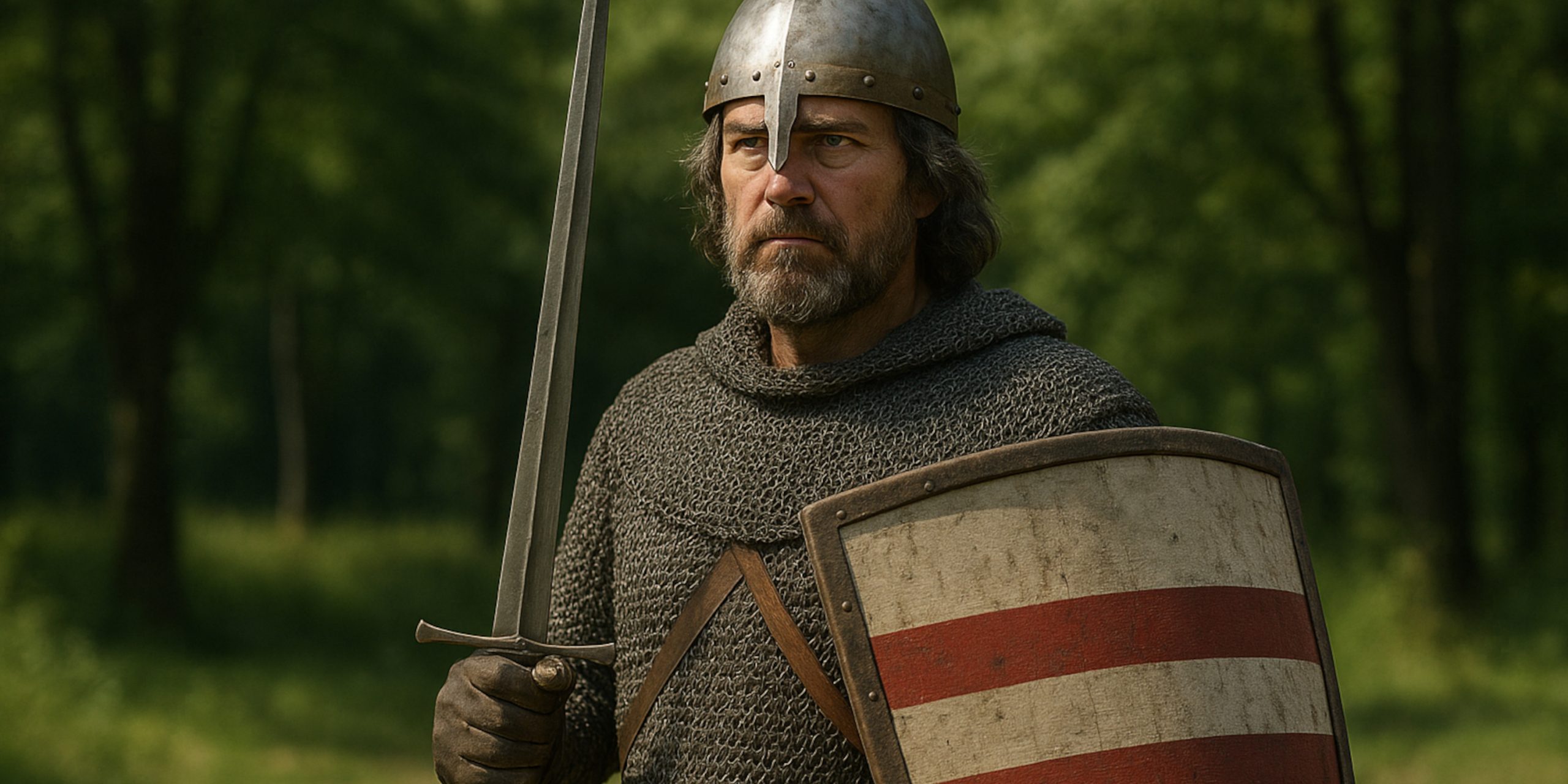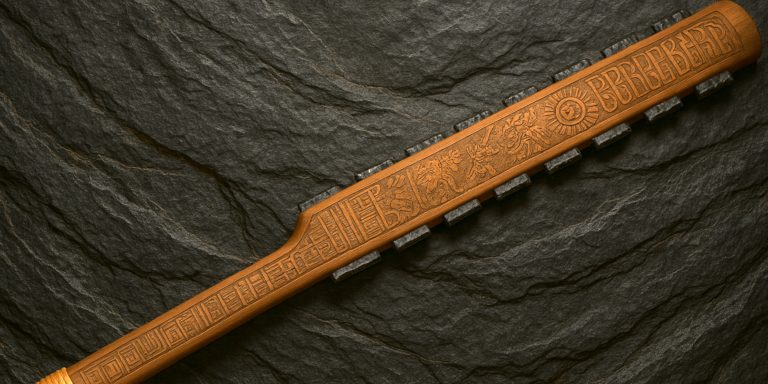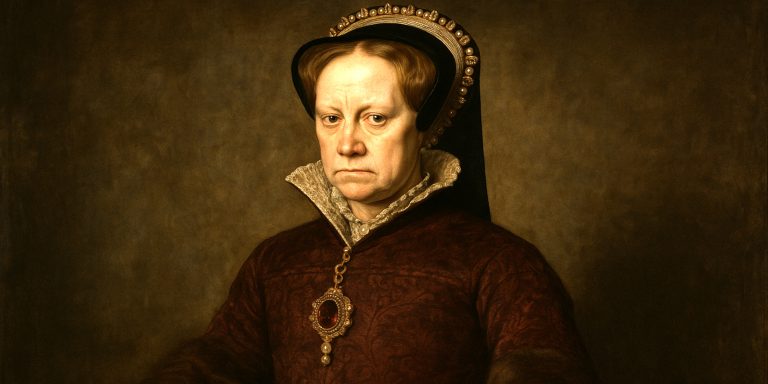
Alfonso I of Aragon, often called El Batallador (the Battler), ruled from 1104 to 1134 and left behind one of the most compelling legacies of the early Reconquista. He was not a polished courtly monarch but a warrior-king through and through, obsessed with the expansion of Christian dominion over Muslim-held Spain. His reign reads less like an administrative tenure and more like an epic campaign diary written in blood and dust.
Unlike some of his contemporaries who balanced diplomacy with warfare, Alfonso lived for battle. He was rough-edged, single-minded, and stubborn, but those very traits carved out some of the most decisive territorial gains in Aragonese history.
Arms and Armour
Alfonso I’s military equipment reflected the transitional phase of 12th-century Iberian warfare, where the old Carolingian styles met the emerging high-medieval forms of the crusading age.
Typical Arms and Armour of Alfonso I’s Era:
| Type | Description |
|---|---|
| Helmet | Likely a nasal helm, possibly evolving toward the conical great helm style seen in the First Crusade era. Often worn over a mail coif. |
| Body Armour | Hauberk of riveted mail, knee-length with split skirts for mounted use. Worn with a padded gambeson underneath. |
| Shield | Early kite-shaped shield, painted with Aragonese symbols or geometric designs inspired by crusader heraldry. |
| Primary Weapon | A long arming sword, straight double-edged blade suitable for both cutting and thrusting. Some sources suggest he also favoured the lance as his emblematic weapon. |
| Secondary Weapons | Dagger (possibly an early misericorde), mace, or warhammer for close combat. |
| Horse Equipment | Heavy cavalry harnesses, leather barding, and iron stirrups, with influences from both Moorish craftsmanship and Frankish design. |
It is known that Alfonso’s armies also employed siege machinery such as mangonels and early trebuchets, likely imported or adapted from crusader technology. His familiarity with these engines was key to his success in taking fortified cities like Zaragoza.
Battles and Military Acumen
Few Iberian rulers of his era could rival Alfonso I’s martial record. His campaigns were relentless, calculated, and executed with the grim precision of a man convinced of divine favour.
Key Battles and Campaigns:
- Battle of Valtierra (1110)
Alfonso’s first major victory over the Almoravids, marking the beginning of his reputation as El Batallador. - Siege of Zaragoza (1118)
Perhaps his greatest triumph. After months of methodical siegecraft, Zaragoza fell and became the new capital of Aragon. The city’s capture was both a military and symbolic coup, strengthening Christian control in the Ebro Valley. - Campaigns in Andalusia and Valencia (1120s)
Alfonso led deep raids into Muslim territory, extending as far as Granada. These expeditions were often punitive but demonstrated remarkable logistical organisation for their time. - Battle of Cutanda (1120)
One of the defining victories of the Reconquista. Alfonso’s forces, bolstered by French crusaders, crushed the Almoravid army, killing its general and cementing Aragon’s dominance in the northeast. - Conflict with Navarre and Castile
His relations with neighbouring Christian realms were notoriously turbulent. His estrangement from his wife, Queen Urraca of Castile, even sparked open war. Alfonso’s sense of autonomy bordered on arrogance, yet his independence preserved Aragon’s distinct identity.
Military Style and Leadership
Alfonso was not a strategist in the modern sense but an instinctive commander who led from the front. Chroniclers describe him charging into battle personally, sword in hand, his presence rallying men who believed their king fought as one of them. He viewed warfare as both a divine duty and a personal calling. His armies were mobile, resilient, and well supplied – traits that allowed him to strike fast and sustain prolonged campaigns.
Where to See Artefacts from His Reign
While no personal relics of Alfonso I himself are known to survive, the material culture of his reign can be found scattered across museums and cathedrals in Spain.
Recommended Sites:
- Aljafería Palace (Zaragoza): Originally a Moorish fortress, later remodelled by Alfonso and his successors. Portions of the Christian modifications date to his era.
- Cathedral of Zaragoza (La Seo): Houses Romanesque sculpture and decorative fragments from the early 12th century, contemporary with Alfonso’s rule.
- Museo de Zaragoza: Exhibits Romanesque and early medieval arms and armour from Aragonese excavations, illustrating the kind of equipment his knights would have carried.
- Monastery of San Juan de la Peña: Burial place of many Aragonese kings, and a remarkable architectural survivor from Alfonso’s time.
Latest Archaeology and Discoveries
Recent archaeological work in Zaragoza and Huesca has unearthed remnants of fortifications, weapon fragments, and urban structures datable to the early 12th century. In 2018, excavations near the old city walls revealed layers of burnt timber and arrowheads that correspond closely with the siege period of 1118.
At Cutanda, limited field surveys have also found iron fragments, possibly arrow or lance tips, although their definitive association with the battle remains debated. Researchers are now using ground-penetrating radar to map subsurface disturbances, potentially offering new insight into how Alfonso deployed his forces in open-field battle.
Legacy and Personal Reflection
Alfonso I’s life was defined by a singular purpose: war. He died without an heir, leaving behind a testament that astonishingly willed his kingdom to the military orders of the Templars, Hospitallers, and the Holy Sepulchre – a gesture that scandalised his nobles and clergy alike. It was, however, perfectly in keeping with his crusading zeal.
As a historian, I find Alfonso’s reign both awe-inspiring and tragic. He expanded Aragon’s borders, reshaped Iberian geopolitics, and lived as the archetype of the medieval warrior-king. Yet he died isolated and exhausted, undone by the very forces he had mastered. His kingdom endured, but the man himself remained trapped in legend – a relic of an age when kings rode with swords instead of sceptres.



